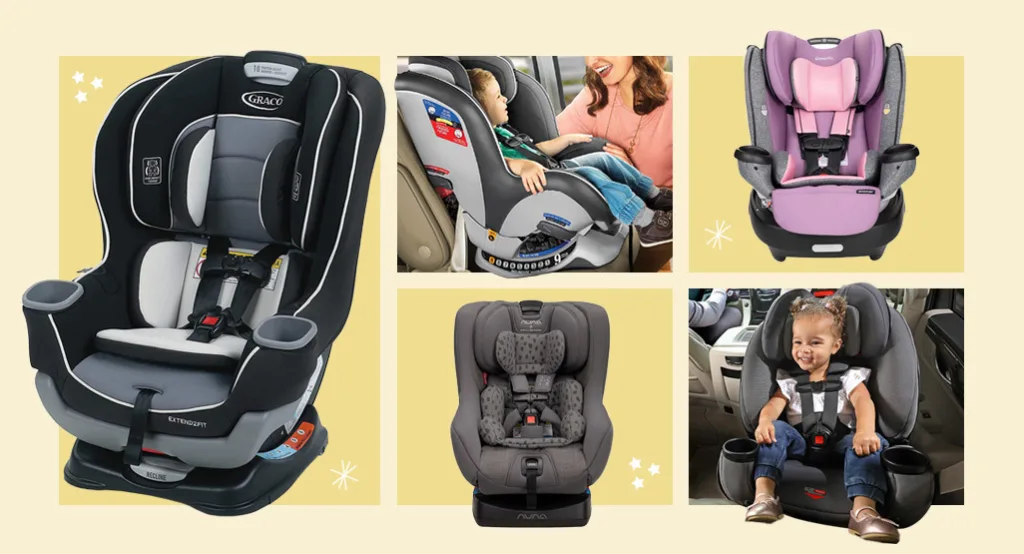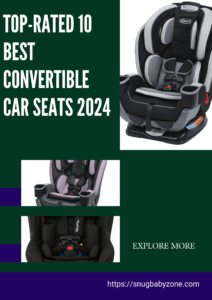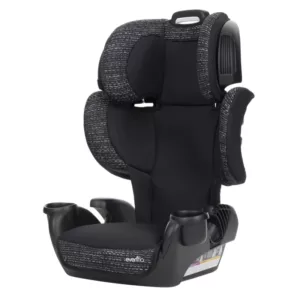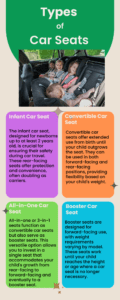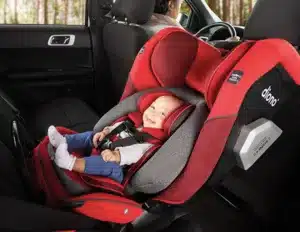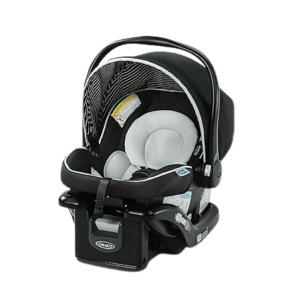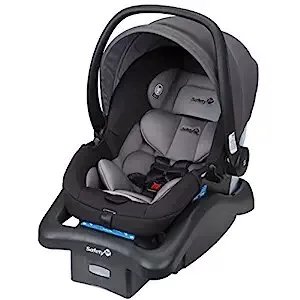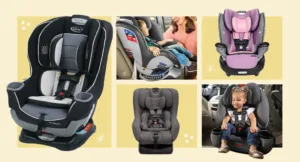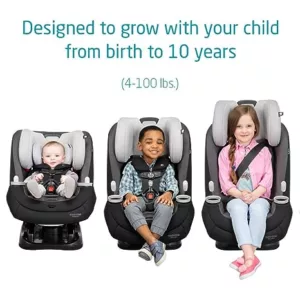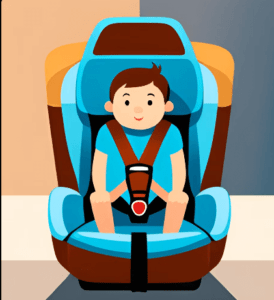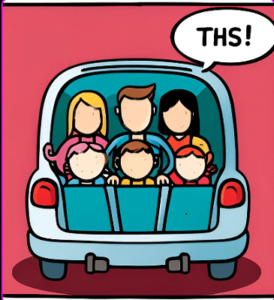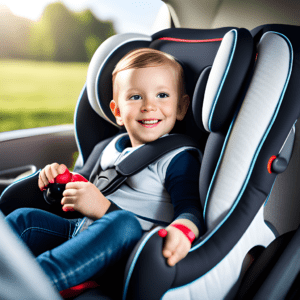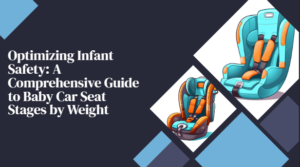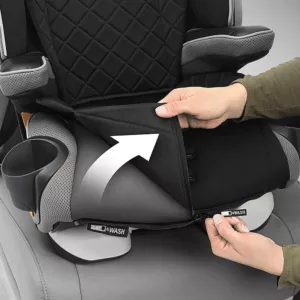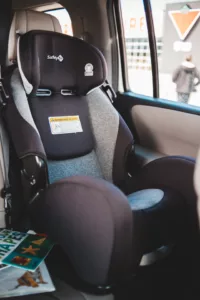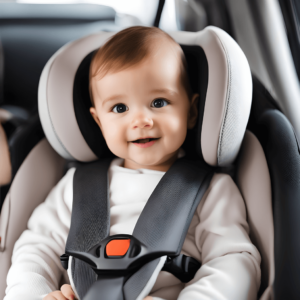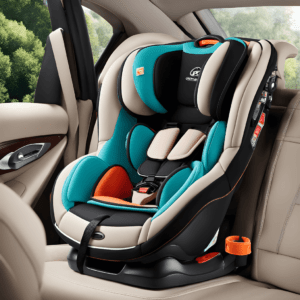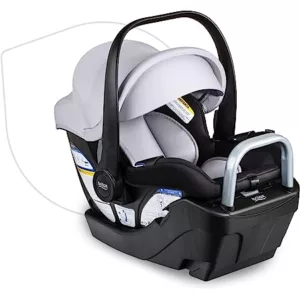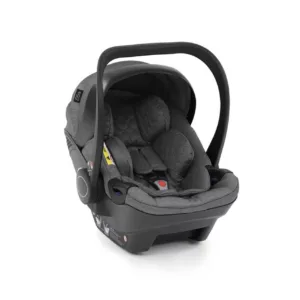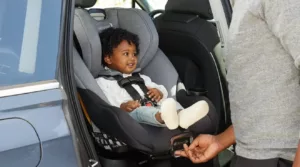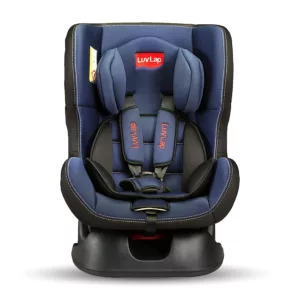Car safety for your child is a paramount concern for every parent. One essential aspect of child safety while traveling in a vehicle is choosing the right car seat. In this guide, we will delve into the world of convertible car seats and their significance in providing safety and comfort for your child during car journeys.
Thank you for reading this post, don't forget to subscribe!In the early years of a child’s life, two types of car seats are highly recommended for parents to consider: the infant car seat and the convertible car seat. These car seats are designed to ensure the safety and comfort of your child during car travels. Each type has unique features and specifications catering to your child’s growth and development stages. Understanding the differences and benefits of these two car seat options is crucial for parents to make an informed decision that best suits their child’s needs and lifestyle.
Table of Contents
ToggleWhat is a Convertible Car Seat?
A convertible car seat is a type of child car seat designed to adapt and grow with your child from infancy through toddlerhood and sometimes even into preschool. This adaptability is its defining feature.
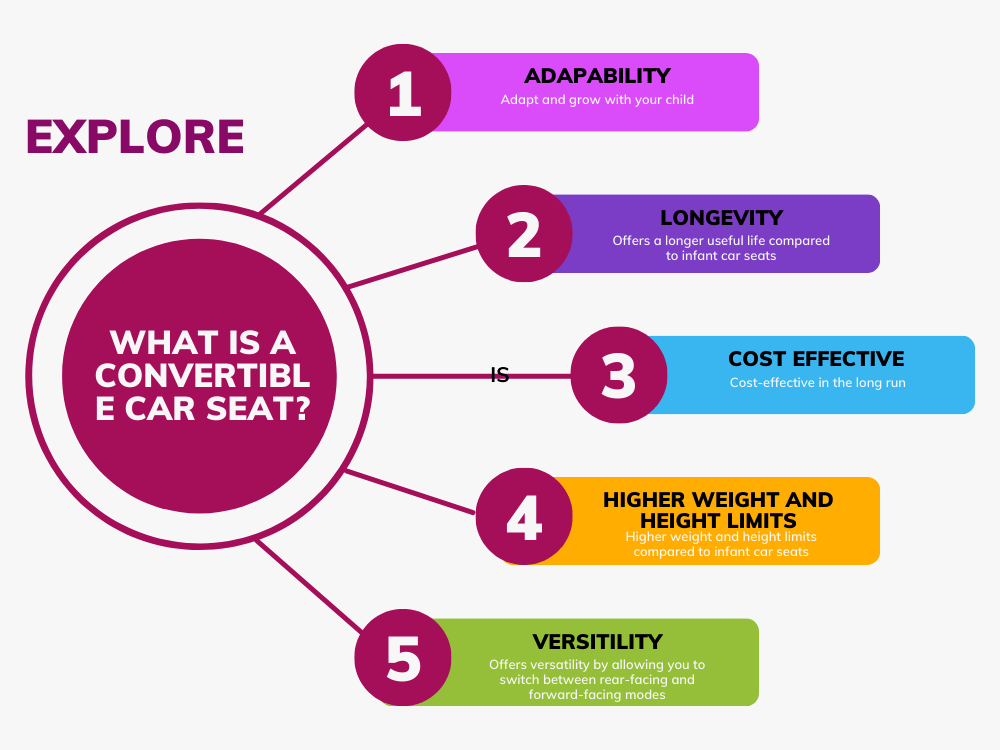
A Comparison between Infant Car Seat and Convertible Car Seat - Infant Vs. Convertible Car Seat:
Here, I am sharing an in-depth analysis of the pros and cons of convertible car seats, which can help parents make a well-informed decision.
Pros and Cons of Convertible Car Seat
PROS
CONS
- Longevity: Crafted to adapt alongside your child from their earliest days through toddlerhood and, in some cases, extending beyond.
- Cost-Effective: Eliminates the need to buy multiple seats as the child grows.
- Higher Weight and Height Limits: Suitable for larger babies and toddlers.
- Versatility: Can be used rear-facing for infants and then converted to forward-facing for older children.
- Durable: Built to last for several years, offering long-term safety.
- Not Portable: They are not designed to be removed from the car frequently.
- Heavier and Bulkier: It can be challenging to move between vehicles.
- Complex Installation: It may require more time and effort to install correctly.
- Less Infant-Friendly Features: Lack the convenience features of infant seats, like easy compatibility with strollers.
- Upfront Cost: Generally, it is more expensive initially than infant car seats.
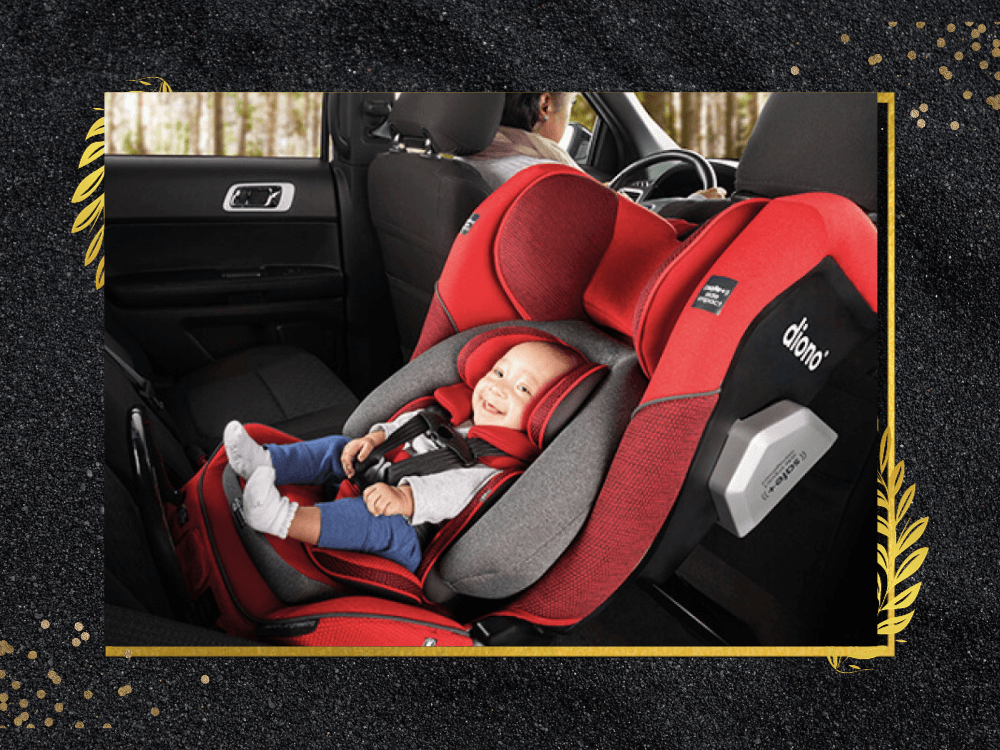
Pros and Cons of Infant Car Seat
PROS
CONS
- Specific Design for Newborns: Tailored for infants, they offer proper support for the baby’s head, neck, and spine.
- Portable: Easily detachable from the base, they allow the baby to be transported without waking them up.
- Compatible with Strollers: Most models can be directly attached to compatible strollers.
- Lightweight: Generally lighter than convertible seats, making them easier to carry.
- Ease of Installation: Often comes with a base that remains in the car, making it easy to click the seat in and out.
- Safety Indicators: Many models include indicators to ensure correct installation.
- Short Lifespan: Only suitable until the baby outgrows it, typically within 12-18 months.
- Height and Weight Limitations: Babies often outgrow them faster in height than in weight.
- Cost: Requires purchasing a larger seat after a relatively short usage period.
- Can Get Heavy: The seat can become heavy with a growing baby.
Infant car seats are ideal for newborns and infants due to their portability and stroller compatibility, but they have a shorter useful life. Convertible car seats, while less convenient for frequent transfers, offer a long-term, cost-effective solution with adaptable features as your child grows. Parents should weigh these factors based on their lifestyle, budget, and the age and size of their child to make the best choice for their family’s needs.
Infant vs. Convertible Car Seats – A Quick Overview:
Factor | Infant Car Seat | Convertible Car Seat |
Safety | Specifically designed for infants with extra head support and padding. It often includes a base in the car for easy click-in and click-out. | Designed to grow with the child, with adjustable straps and height settings. It is less tailored to newborns but offers long-term safety. |
Durability | Generally used for a shorter period (up to a year or a bit more), but well-built to withstand this high-use phase. | Built to last several years, accommodating a child as they grow from infancy to toddlerhood or beyond. |
Flexibility | Limited to infants; not suitable for older babies or toddlers. | Highly flexible; can be adjusted for infants, toddlers, and sometimes older children. |
Usage | Ideal for newborns and infants up to a specific weight/height limit. | It can be used from infancy through toddler years and sometimes beyond. |
Cost | It is generally less expensive than convertible seats but needs to be replaced as the child grows. | They are more expensive initially but a better long-term investment as they grow with the child. |
Convenience | It is very convenient for transporting a sleeping baby in and out of the car. Often compatible with strollers. | It is less convenient for this purpose as it is not portable like an infant seat. However, it’s convenient because it doesn’t need to be replaced as the child grows. |
Note that the best choice depends on your specific needs, budget, and how you plan to use the car seat. Infant car seats are excellent for newborns and offer great convenience, especially for parents on the go. Convertible car seats, while less convenient for quick trips and transfers, provide a long-term solution and adaptability as your child grows.
At what point should the transition be made from an Infant Car Seat to a Convertible Car Seat?
Knowing when to transition from an infant car seat to a convertible one is crucial for your child’s safety and comfort. Typically, it’s time to switch when:
- Your child exceeds the infant car seat’s weight or height limits.
- Their head is within one inch of the top of the infant seat’s shell.
- They have reached the manufacturer’s recommended age and weight for a convertible seat.
The weight limit of infant car seats is often prominently advertised, sometimes even in the product name. However, it’s common for children to outgrow the height limit before the weight limit.
Most infant car seats can accommodate a weight range of 28 to 35 pounds and a height of 30 to 35 inches. To find your seat’s limits, refer to the user manual, check the label on the seat’s side, or look up the details online. Generally, children reach these limits between 9 and 18 months.
Car Seat Stages by Weight, Age, and Height:
A table that recommends types of car seats based on a combination of weight, age, and height will provide a comprehensive guide for parents. Here’s a detailed table for reference:
Age Range | Weight Range | Height Range | Recommended Car Seat Type | Notes |
0-12 months | Up to 22-35 lbs | Up to 28-32 inches | Infant Car Seat | Rear-facing only; ideal for newborns and small infants. |
1-3 years | 20-40 lbs | 29-37 inches | Convertible Car Seat (Rear-Facing) | Can be used from infancy; continue rear-facing as long as possible within seat limits. |
3-7 years | 30-65 lbs | 37-49 inches | Convertible Car Seat (Forward-Facing) or Combination Seat | Forward-facing with a harness; combination seats can be converted to a booster. |
4-12 years | 40-100 lbs | 43-57 inches | Belt-Positioning Booster Seat | Uses vehicle’s seat belt; ensures proper belt positioning on the child’s body. |
Over 8 years | Over 100 lbs | Over 57 inches | Seat Belt (No Booster) | Typically suitable when a child is 4 feet 9 inches tall and can safely use the car’s seat belt. |
Note:
Age ranges are approximate; the child’s weight and height are more critical for car seat selection.
Refer to the specific car seat manufacturer’s guidelines for weight, height, and age recommendations, as these can vary.
The transition from one seat type to another should be based on the child’s size rather than age alone, and always prioritize keeping the child in the current seat type until they attain the car seat manufacturer’s specified maximum height or weight limit.
Conclusion – What is a Convertible Car Seat:
In conclusion, when it comes to ensuring your child’s safety during car journeys, understanding “what is a Convertible Car Seat” is paramount. A convertible car seat is a versatile, long-term solution for your child’s travel safety needs. These seats are designed to adapt from rear-facing for infants to forward-facing for toddlers and sometimes older children, which are built for durability, safety, and adaptability.
While infant car seats provide unmatched convenience for newborns, especially with features like portability and stroller compatibility, they are limited by a shorter lifespan. In contrast, although initially more expensive and less portable, convertible car seats offer a cost-effective and long-lasting alternative. They accommodate higher weight and height limits, ensuring your child remains safe and comfortable as they grow.
The decision between an infant car seat and a convertible car seat hinges on your lifestyle, budget, and your child’s age and size. It’s essential to transition to a convertible car seat when your child outgrows the infant seat in weight, height, or both. Remember, the key is understanding what a convertible car seat is and knowing when it’s the right time to make the switch for your child’s continued safety on the road.
For parents navigating the early years of child-rearing, this comprehensive guide offers the necessary insights to make an informed choice about car seats, ensuring your child’s safety and comfort during every car ride.
Frequently Asked Questions:
1. What is the weight and height limit for convertible car seats?
The weight and height limits for convertible car seats vary by model and manufacturer. Typically, they can accommodate children from birth up to 40-65 pounds and 40-57 inches in height when used in the forward-facing position. Rear-facing limits may differ, so referring to the specific car seat’s manual for precise details is essential.
- Are convertible car seats FAA-approved for air travel?
Some convertible car seats are FAA-approved for air travel, but not all of them. It’s crucial to check the manufacturer’s label or the car seat’s manual to confirm whether it is certified for airplane use. Generally, seats with the FAA approval label can be used on aircraft.
- Can I install a convertible car seat in any car?
Convertible car seats can typically be installed in most vehicles, but the ease of installation may vary. It’s recommended to check your car’s manual and seat’s manual to ensure compatibility and proper installation. Some car seats may require LATCH (Lower Anchors and Tethers for Children) or seat belts for installation.
- Are convertible car seats easy to adjust as my child grows?
Convertible car seats are designed to be adjustable to accommodate a growing child. They often come with adjustable harness heights and headrests. While the adjustment process can vary between models, many convertible seats offer user-friendly features for easy customization as your child grows.
- Can I use a convertible car seat for multiple children in the family?
Yes, convertible car seats can be used for multiple children in the same family, provided the seat has not exceeded its weight or height limits and is installed correctly. It’s essential to ensure that the seat is adjusted to fit each child’s size and securely installed in the vehicle for the utmost safety.
